

Jason Wilhelm
Impoundment Barramundi Fishing Gun
Jason was instrumental in proving to the masses that winter barramundi were not only a viable target, but a red hot option. Fishing Monduran and Awoonga for over 15 years, including over 7 as a professional guide, he went on to re-write the rule book when it came to barra fishing. Prominent on the tournament scene, prolific on fishing video and vocal when it comes to his passions, Jason’s reputation precedes him!
Jason’s Impoundment Barra Fishing Tips
- Jason recommends throwing out the “Rule Book” on barramundi and spending a lot of time being observant, keeping an open mind and not letting other peoples convictions colour your thinking. There are signs and indicators of bite periods, but they’re often different than people think. You need to let nature tell you what’s going on.
- Even though he’s fished for and caught lot of species Jason finds that barra are unlike any other fish he knows. They can be triggered to take a lure when they’re not feeding, if you know how – and high speed is often the key.
- Jason has kept detailed diaries over 15 years of fishing, 7-8 years as a barramundi guide with a 95% success rate. He’s looked for patterns in wind, tides, barometric pressure, lunar cycles and so on and found……. Nothing! Jason attributes his success to being present on the day and constantly observing and thinking about indicators of how the barra might behave. Cloud cover and wind changes at the time he was on the water were the biggest factors.
- Barramundi are catchable at any time on any day. Jason feels it’s too easy to use lunar cycles and other factors as an excuse for not catching anything. The angler might “take his foot off the accelerator”, rather that stay focussed and 100% alert if he believes there are reasons why the fish won’t bite.
- There are days on the impoundments where a soft vibe or a blade will outfish just about any other lure. Other times when barra are feeding on redclaw a soft plastic paddletail literally dragged along the bottom will smash the fish. Yet other times a soft plastic frog burned at high speed is the key.
- Comfort is important. Air temperatures can get down to single digits on these impoundments, so bring plenty of warm clothing, comfortable footwear and so on. It’s very difficult to maintain the focus and concentration required for this style of fishing is you are uncomfortable.
- Avoid “Ramp Talk”. Jason has so often heard stories when he’s turned up at the ramp of “I’ve been here for days and haven’t had a bite” and then gone ahead and caught plenty of fish. This can be demoralising but if you ignore what others are saying, stay focussed, pay attention to details and prepare for a grind there’s a really good chance you’ll mess with some barra.
- The toughest fishing in central Queensland impoundments over winter usually comes after a south west wind and a clear, cold night. These conditions clear and cool the water dramatically and can make the fish more sluggish. When this happens, look for isolated pockets where the water is even half to one degree warmer. Wind is your friend, even as little as five knots can push slightly warmer surface water into a bay and barra will patrol the waters edge. Move in on the electric and be prepared to spook the odd fish when finding them. Watch your sounder closely for temperature rises.
- The “Soup Line” is a prime spot to fish in any impoundment. This occurs when there is a bit of breeze that causes muddy water along the shoreline that might extend from 1-3 ft from the bank. Don’t be put off by the closeness to the bank or shallowness of the water there are always barra in these areas. They are easily spooked though, so long casts with soft landing lures like frogs are definitely the key. Noisy hard bodies will spook a fish in a flash in this scenario.
- Wind changes are important to be aware of. Fish don’t move the instant the wind swings, so if you’re onto some fish on the soup line in a bay, reposition your boat and continue fishing until they go off the chew.
- When a southerly blows up on Awoonga there can be a 3ft soup line along the bank within minutes and local resident barra will move in almost immediately and start feeding.
- Electric motors are better than petrol ones, but they still make a lot more noise than most anglers think. Jason prefers to tie up to a tree or to use an anchor to hold station while he fishes. Some bicycle inner tube over the anchor chain will reduce the noise it makes during deployment and use. Be super careful and quiet about deploying your anchor.
- On a glassy cold day, cast a soft frog close to the bank in timbered areas and work it through clear water or the soupline.
Jason’s Impoundment Barra Fishing Tackle
- As a guide, Jason preferred spin tackle to baitcast in impoundments, especially in heavy timber. This is partly because novice fishers can quickly learn to cast, but it’s also a big advantage when a barra takes you into timber because you can flip the bail open and high stick the fish. This can cause the barra to get disoriented and jump, rather than bury itself in the sticks. Not so easy to do with a baitcaster!
- A 7’ to 7’2” spin rod with the best 3000-4000 size reel you can afford with 20-30lb braid (get high vis colours for soft plastic fishing as it helps with bite detection. Jason doesn’t like fluorocarbon leaders because of their stiffness and refraction. He finds that 100lb Black Magic Supple Trace or Schneider line mono gives protection from getting rubbed off without impacting on lure action.
Jason’s Winter Barramundi Fishing Lures
- A soft plastic frog or something similar in size and shape. A Zoom Horny Toad rigged weedless with a 7/0 work hook that has a small amount of weight on the shank. This can be cast over the soupline or even in clear water and landed on the bank, then cranked slowly into the water. Wind slowly for a few turns then stop. Repeat a few times and then if it hasn’t been taken, crank it back fast as the speed will often create a strike. With weedless frogs, pick a white or brightly coloured frog so you can see it. Watch the line extremely closely and at the slightest tick on the line or the instant your frog disappears, set the hook hard and fast 2-3 times. Fish a super heavy drag to ensure a good hookset, but be ready to back the drag off quickly during the fight.
- A 110mm Squidgy Slick Rig (the original, fully weighted version) is a great lure to burn back at top speed, but it can be fished in 1 foot or 50 ft of water. It might not be new or glamorous, but this lure remains one of the most effective soft plastic barramundi lures. Jason always rigs a Slick Rig with a stinger hook. This is easily done, google or youtube is your friend, there’s no shortage of tutorials available. Jason spends at least 30 minutes on each Slick Rig preparing it for fishing. This includes removing the hook and dropping the lure in boiling water to straighten the plastic before reinstalling the hook on a home-made jig designed for fitting a stinger. Adding rattle chambers and modifying the tail in various ways can also increase the fish catching ability.
- A suspending timber hardbody lure can be deadly, especially on calm, still days. The Richo’s Extractor 11 is a good example but similar lures also work – as long as it’s timber. This lure reaches 9-10ft and will stay suspended for 1 minute or even 2 minutes (not an exaggeration) without movement. The next twitch will often cause a barra to implode on the lure.
Related Episodes
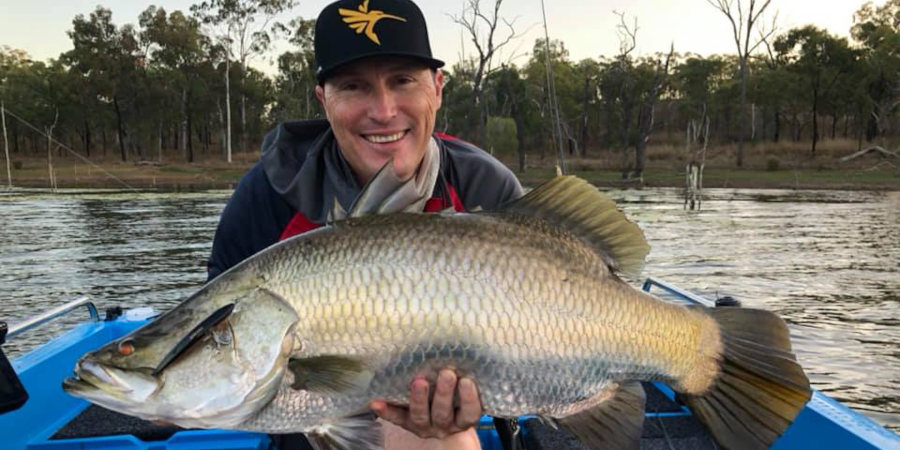
Barramundi Fishing In Lakes Awoonga And Monduran: A Comprehensive Guide
Get all the advice you need for fishing Lake Awoonga and Lake Monduran. Gun angler and former guide Roderick Walmsley shares his tips here.

Central Queensland Barra Lakes With Roderick Walmsley
Rod's interview on barra lakes was ALF EPISODE 648. Check out our lure fishing archives for more information on Barramundi Fishing, or grab our guide to Barramundi Lures. Roderick Walmsley Fishing Writer and Personality Roderick has made a life out of fishing. A...

Barramundi Paradise: Lakefield National Park Fishing
Lakefield National Park is a remote barramundi wonderland, but Luke Galea reckons it’ worth “doing the miles to get the smiles” even when you’re off the beaten track already. Tune in as he explains how to plan and execute a land-based Lakefield National Park fishing odyssey.

Unravelling Trophy Wet Tropics Barramundi In The Spring
ALF EPISODE 637: This Interview With Brodie Quaas Is His Second On Wet Tropics Barramundi. You Can Check Out His Previous Episode Here. Or, Get Our Barramundi Lures Guide Brodie Quaas Far North Queensland Fishing Guide Brodie is a former NSW tournament angler who...
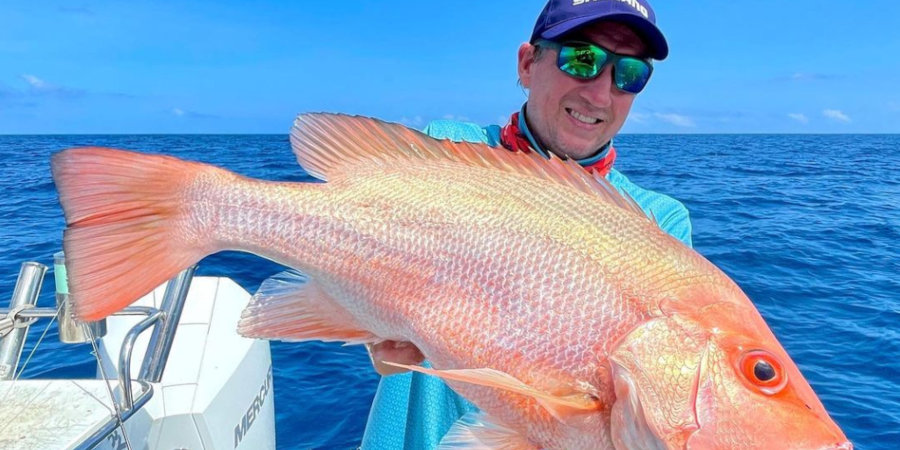
Five Groote Eylandt Fishing Adventures With Bomber Farrell
Bomber Farrell returns to the ALF podcast, this time to explain his top five Groote Eylandt fishing experiences!
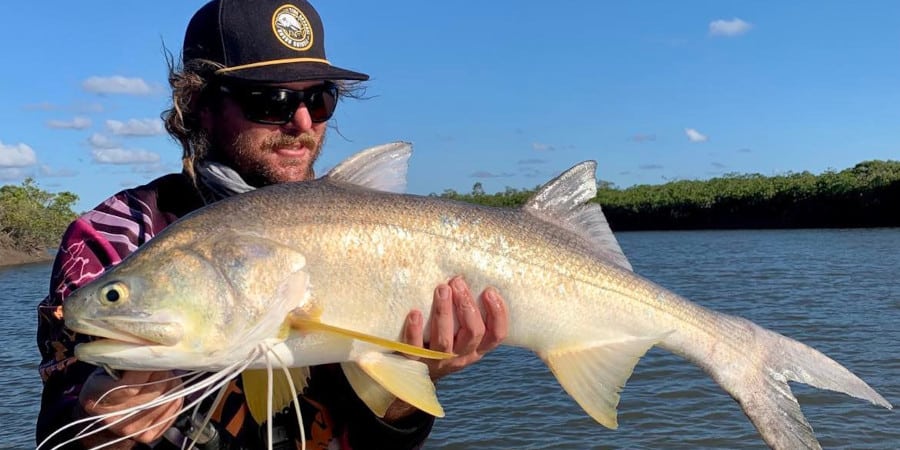
Episode 593: Great Sandy Straits Autumn Fishing With Ryan Holdsworth
The Great Sandy Strait has almost unlimited barramundi, mangrove jack and threadfin habitat….. you just need to know how to fish it. Fortunately, today’s guest Ryan Holdsworth gives his tips freely and will put you on the right course to success!
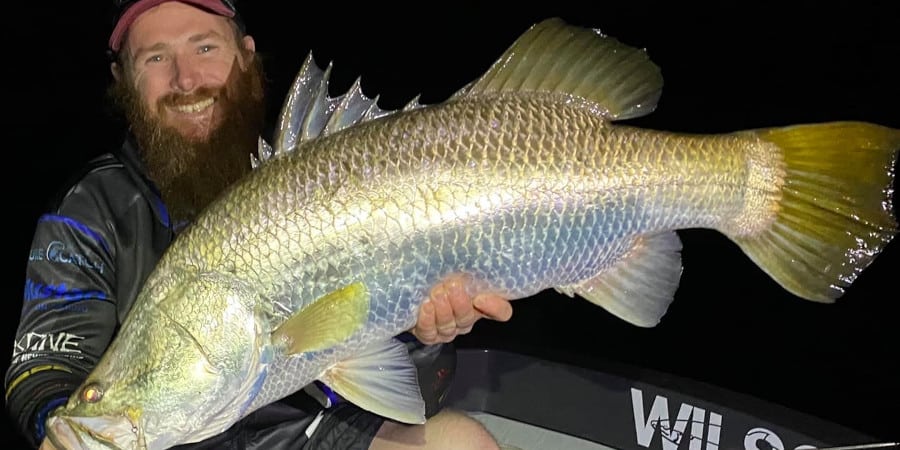
Mackay Headlands Barramundi: What You MUST Know Before You Get Smoked!
Jono Clark is probably best known as an gun impoundment barra angler, but he also chases barra (and a ton of other species) in shallow water on headlands. Today he gives us the good oil on how to go about putting some solid fish on the deck.
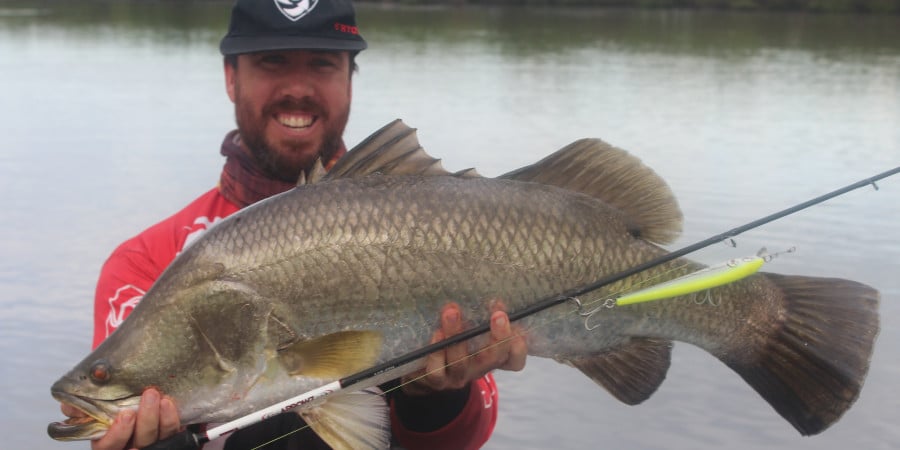
Episode 581: Chambers Bay Runoff Barramundi With Tristan Sloan
The barra fishing in NT during the runoff period is legendary and today’s guest has had plenty of opportunity to experience it. Tristan Sloan shares his tips and advice for one of his favourite runoff barra haunts – Chambers Bay!
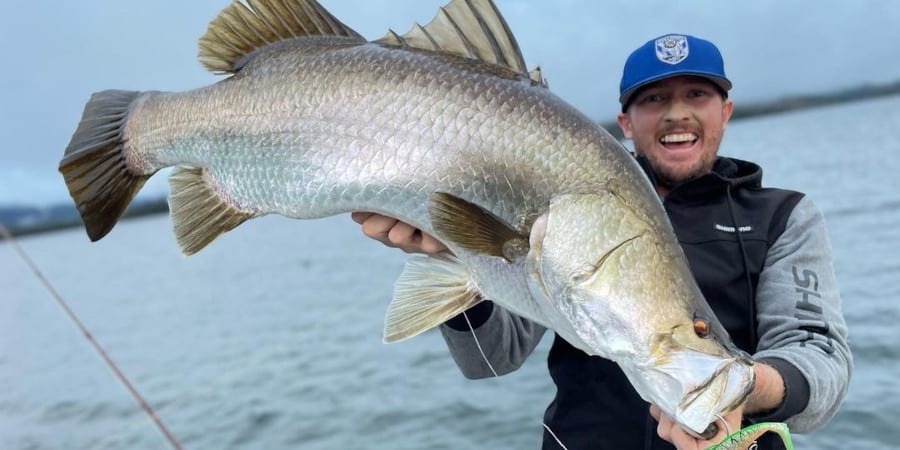
Episode 577: Lake Tinaroo Barramundi With Brodie Quaas
Lake Tinaroo is famous for producing some if the largest impoundment barra you’ll find anywhere, and our guest in Episode 577 is fast developing a reputation for putting his clients onto some massive specimens!

Barramundi Fishing In Lakes Awoonga And Monduran: A Comprehensive Guide
Get all the advice you need for fishing Lake Awoonga and Lake Monduran. Gun angler and former guide Roderick Walmsley shares his tips here.

Central Queensland Barra Lakes With Roderick Walmsley
Rod's interview on barra lakes was ALF EPISODE 648. Check out our lure fishing archives for more information on Barramundi Fishing, or grab our guide to Barramundi Lures. Roderick Walmsley Fishing Writer and Personality Roderick has made a life out of fishing. A...

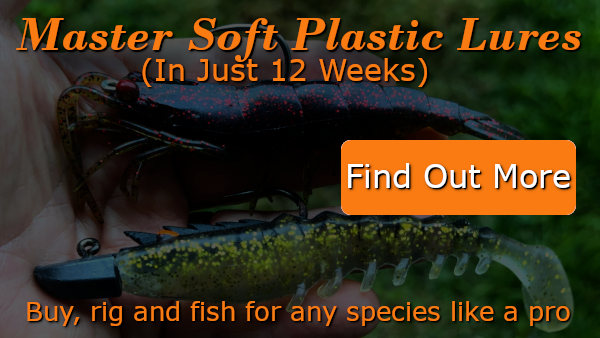
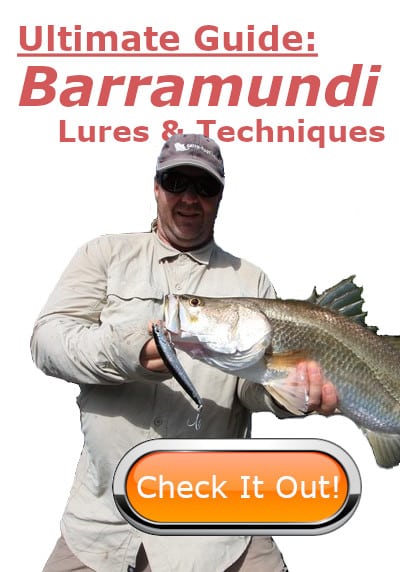
0 Comments